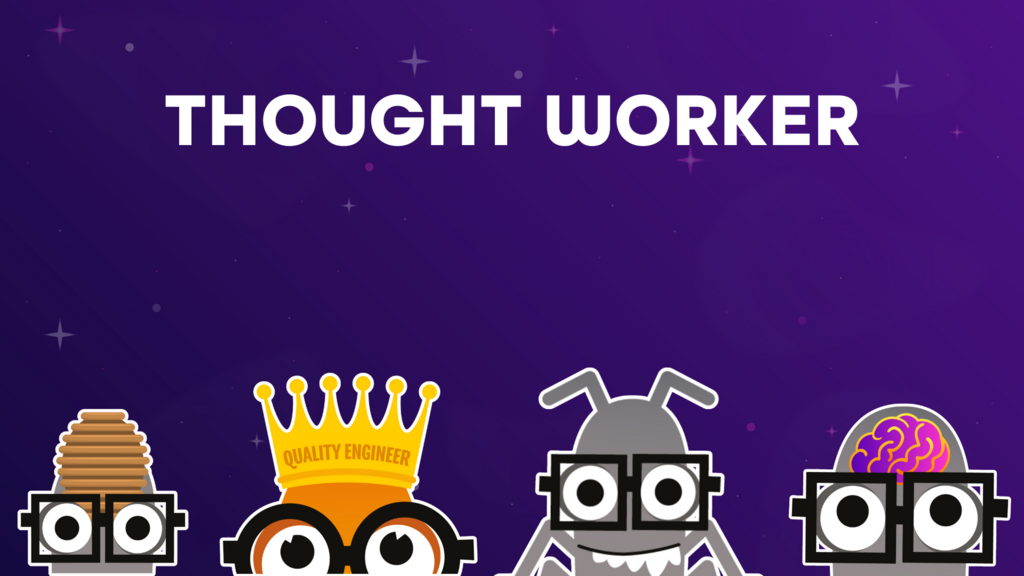Particularly in the context of software development and testing, a thought worker is someone whose primary contribution and value stems from their cognitive abilities rather than purely from any physical output. For example, many roles could write a test case. For it to have value, target risk, and generate meaningful feedback, deep thought and critical analysis must take place. It is about being valued for their capacity to solve intricate problems, to think deeply and critically about complex systems, point out potential issues or ambiguities, or to connect seemingly disparate ideas, as much or even more than for any physical skill they might employ.
Think of it this way. While a developer might spend hours typing code, or a tester might click countless buttons, the true value these individuals bring is in the mental gymnastics beforehand. It is in the careful consideration of design patterns, the meticulous planning of test strategies, the insightful deduction when tracking down an elusive bug, or the creative leap that brings a new feature to life. It is the ability to anticipate future problems, to understand intricate user behaviours, and to synthesise information from various sources to form a coherent solution.
For a thought worker, their output is often the clarity, the strategy, the insightful question, the elegant solution, or the precise bug report. Their time is best spent in deep work, grappling with complexities, rather than simply executing repetitive tasks. Recognising the thought worker means appreciating the immense intellectual capital they bring to the table, and understanding that fostering an environment that encourages deep thinking and problem-solving is paramount for building truly high-quality and innovative software. It is about valuing the brain behind the keyboard.
Think of it this way. While a developer might spend hours typing code, or a tester might click countless buttons, the true value these individuals bring is in the mental gymnastics beforehand. It is in the careful consideration of design patterns, the meticulous planning of test strategies, the insightful deduction when tracking down an elusive bug, or the creative leap that brings a new feature to life. It is the ability to anticipate future problems, to understand intricate user behaviours, and to synthesise information from various sources to form a coherent solution.
For a thought worker, their output is often the clarity, the strategy, the insightful question, the elegant solution, or the precise bug report. Their time is best spent in deep work, grappling with complexities, rather than simply executing repetitive tasks. Recognising the thought worker means appreciating the immense intellectual capital they bring to the table, and understanding that fostering an environment that encourages deep thinking and problem-solving is paramount for building truly high-quality and innovative software. It is about valuing the brain behind the keyboard.




